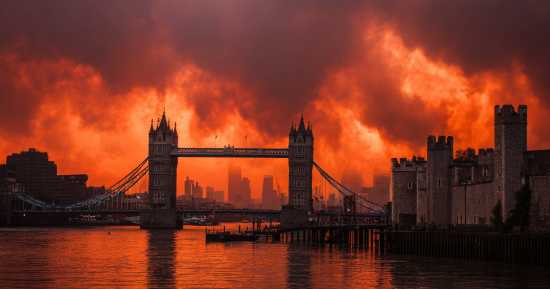
Bursting from the narrow streets of 17th-century London, the Great Fire of London Quiz unfolds a story of endurance and ingenuity and alot of fire.. In the aftermath of destruction, Londoners reshaped their city with determination and creative brilliance, turning tragedy into an opportunity for lasting transformation. This historic moment did not only change the skyline, it redefined craftsmanship, architecture, and urban planning. From the rebuilding of homes to the creation of landmarks that endure today, the fire’s legacy became one of rebirth. Through its history, we uncover not only survival but a cultural awakening that reshaped London forever.
The fire’s aftermath inspired remarkable achievements by the people and the people. Sir Christopher Wren’s architectural vision produced masterpieces like St. Paul’s Cathedral, blending practicality with elegance. Skilled artisans and builders worked tirelessly, crafting a new London from its ashes. Streets widened, structures modernized, and a sense of shared purpose grew among its citizens. These changes formed a city not defined by ruin but by its ability to adapt and prosper.
7 Fun Facts About The Great Fire Of London
- The fire began in a small bakery on Pudding Lane in 1666.
- Over 13,000 houses were destroyed, yet only a handful of lives were recorded lost.
- Sir Christopher Wren proposed a completely redesigned London with grand boulevards.
- London’s first organized fire insurance companies emerged after the disaster.
- The Monument near London Bridge was built to commemorate the fire’s impact and rebuilding.
- Some streets in London still follow the redesigned post-fire layout established in the 17th century.
- Many taverns doubled as planning hubs for architects during the reconstruction phase.
This Great Fire of London Quiz celebrates a moment where ingenuity eclipsed devastation. The city’s history became a story of craftsmanship, urban transformation, and enduring spirit. From innovative building codes to a vibrant new civic identity, London rose not only stronger but culturally enriched. This transformation remains a powerful testament to the creativity and resilience of its people. Their response turned catastrophe into a cornerstone of the city’s proud history.
Rebuilding London’s Architectural Identity
The reconstruction of London revealed a bold approach to city design. Architects and planners embraced wider streets and safer materials, ensuring that history would not repeat itself. Stone and brick replaced timber, changing the city’s character while laying foundations for a safer, more beautiful London.
St. Paul’s Cathedral became a symbol of renewal. Christopher Wren’s vision merged artistic splendor with structural innovation, standing as proof of what determination could achieve. Its dome, visible across the city, marked the rise of a reimagined London, blending ambition with artistry.
The rebuilding process also reshaped public spaces. New markets, squares, and commercial areas flourished, creating a city that valued openness and accessibility. Londoners built not only for themselves but for future generations who would walk its transformed streets.
Craftsmanship And Cultural Flourishing
The fire sparked a golden age for artisans. Skilled craftsmen poured their expertise into carpentry, masonry, and metalwork, leaving their mark on every structure. Their contributions turned necessity into artistry and made the city a living gallery of human talent.
Guilds gained renewed importance, training new generations of builders and designers. These organizations ensured quality and preserved techniques that defined London’s visual identity. Their influence extended beyond construction, nurturing a culture of professional pride and excellence.
Art and culture thrived alongside urban development. Painters, writers, and chroniclers documented London’s rebirth, transforming it into a narrative celebrated across Europe. Their works helped cement the Great Fire not only as a disaster but as the spark of cultural rebirth.
Innovation And Lasting Legacy
Innovation became London’s guiding principle in the years following the fire. New building regulations created safer, more durable homes and commercial structures. These measures reshaped construction standards that influenced cities far beyond England.
The Great Fire also fostered stronger governance. Civic leaders coordinated rebuilding efforts and encouraged new public services that improved urban life. This organized response became a model for city management in times of crisis.
The legacy of the fire lives in the city’s enduring character. London emerged from its ashes as a hub of progress, with lessons that continue to inspire urban resilience and cultural pride today.
7 Serious Facts About The Great Fire Of London
- The fire burned for four days, devastating nearly 80 percent of the medieval city core.
- Wider streets were introduced to reduce fire hazards in future urban designs.
- New building regulations required the use of brick and stone instead of wood.
- Rebuilding efforts gave rise to landmark structures like St. Paul’s Cathedral.
- The fire led to the development of the first formal fire brigades in London.
- Historic records show the rebuilding cost consumed a significant portion of the city’s economy.
- The fire’s legacy influenced urban planning policies in Europe for centuries.
Great Fire Of London – FAQ
The Great Fire of London was a major conflagration that swept through the central parts of London in September 1666, destroying a significant portion of the city, including homes, businesses, and landmarks.
The Great Fire of London ravaged over 13,000 houses, 87 churches, and numerous public buildings, leaving around 70,000 people homeless. The fire also destroyed iconic structures like St. Paul’s Cathedral and the Royal Exchange.
The Great Fire of London led to advancements in firefighting techniques, urban planning, and building regulations. It highlighted the importance of fire safety, city infrastructure, and disaster preparedness, influencing future city development and fire prevention measures.
